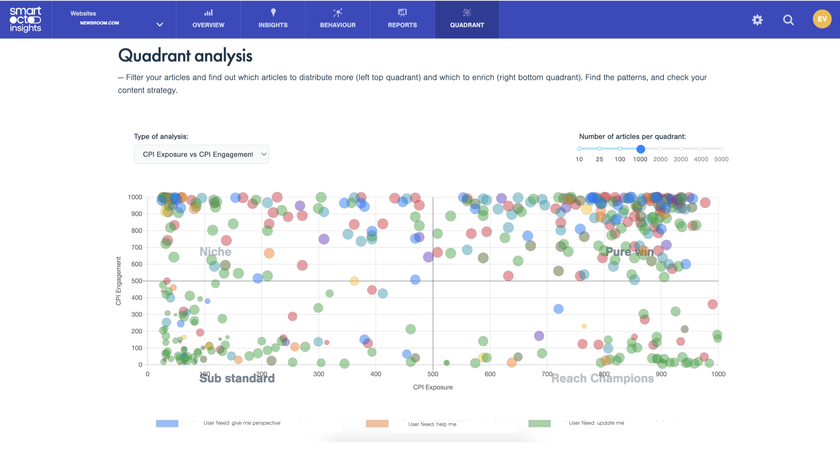You can’t manage what you don’t measure - that’s an adage as old as the hills. But, despite its vintage, it’s a sentiment that still needs reinforcing. It doesn’t need to be arduous - here’s what you need to know to perform a quick ‘success’ audit.
The hard truth is that, whatever success metric you use, a third of your content should never have been produced. Across all brands, in all places, 30-35% of articles massively underperform, our datateam discovered.
There’s a fairly simple response or action to this realisation: identify those deadweight articles and redirect the time and energy spent creating them into stuff that actually adds value to your brand instead.
When we’re asked about how to optimise content, we suggest something obvious first. These suggestions are not ultra-specific, they’re not particularly detailed, and they’re not even revolutionary, but they are solid. What’s more, this simple flow is something you can use right now to audit your output.
- What does online success look like?
- Do your articles miss this mark?
- If they do, what are you going to do about it?



